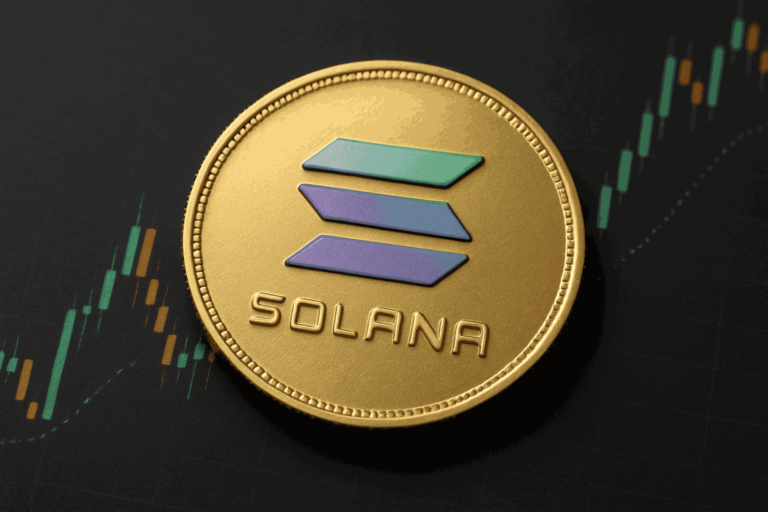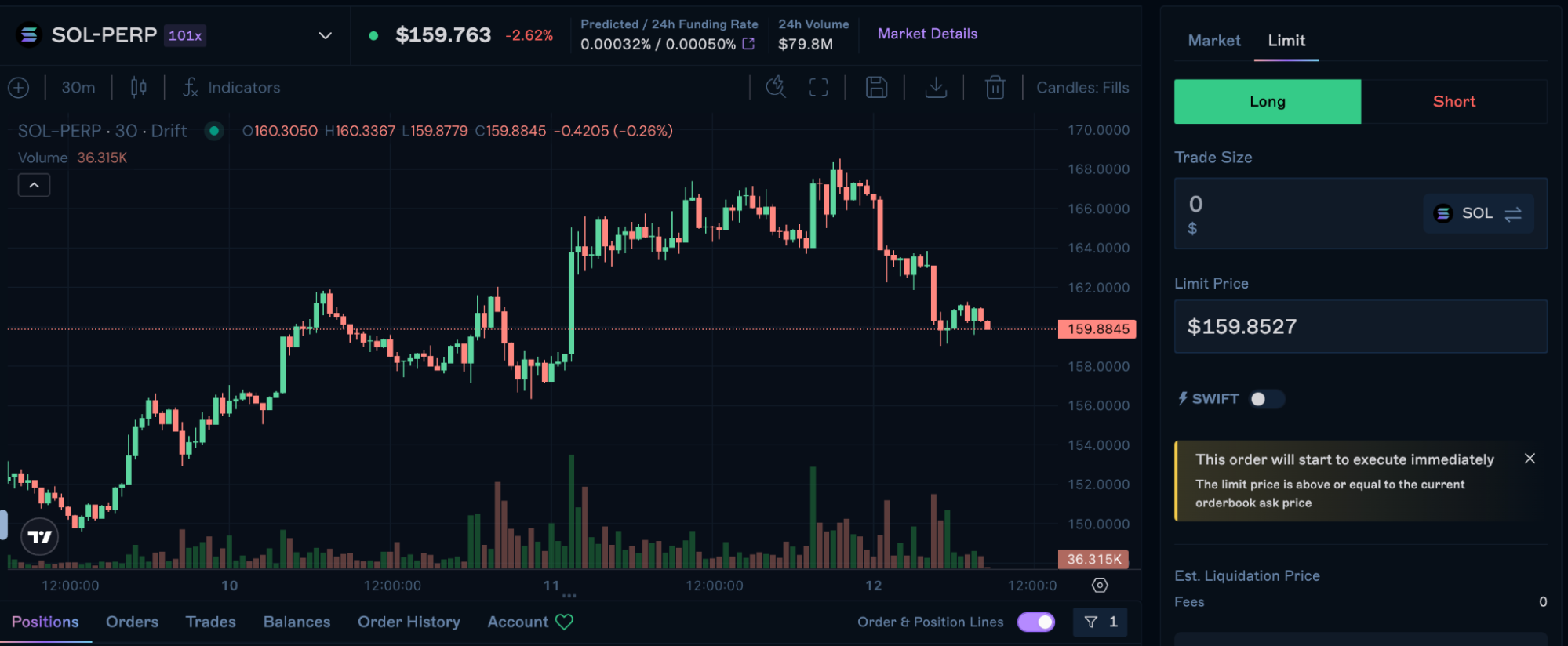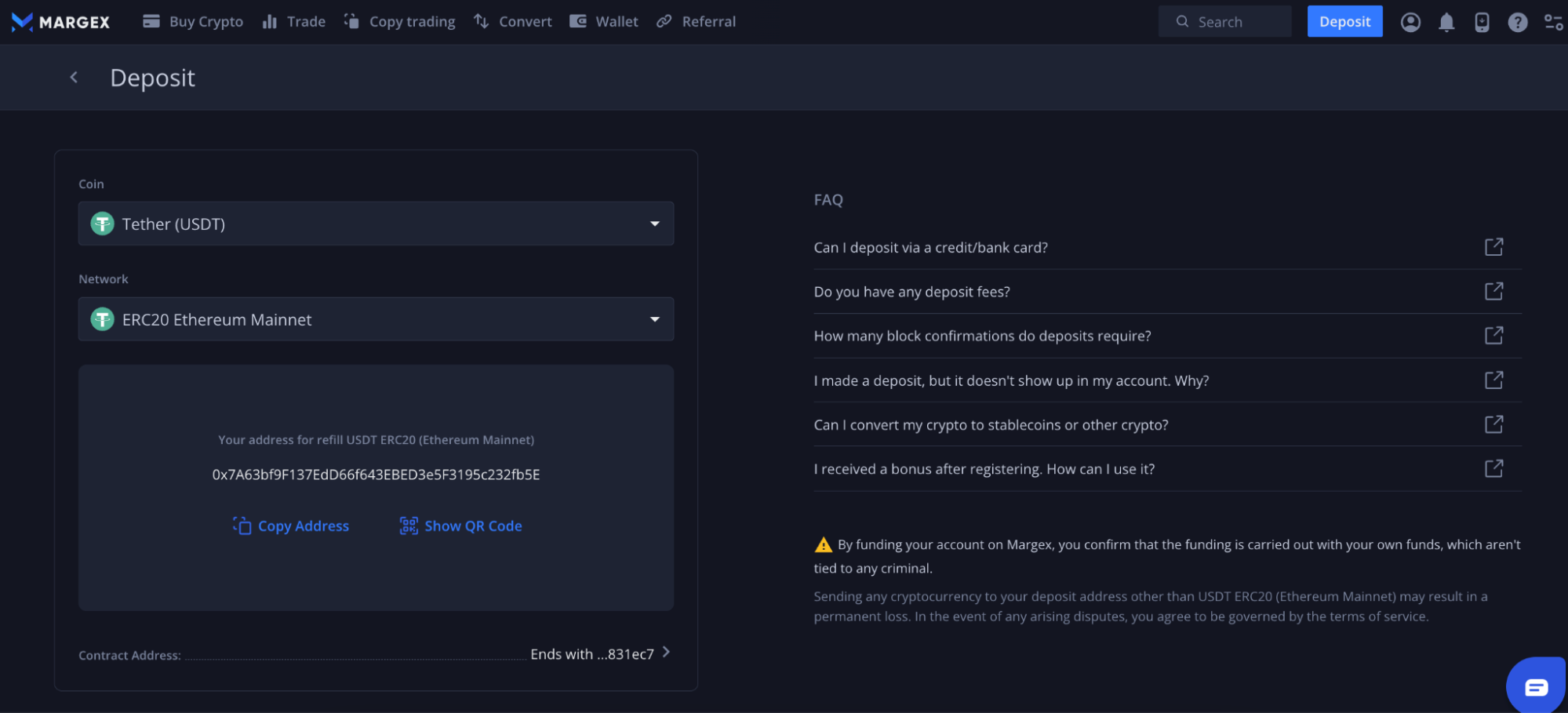Discover the best shitcoins to buy before they blow up. Learn which speculative crypto tokens have the highest upside potential, a...
How to Trade Solana Futures: A Comprehensive Guide for 2025
Last Updatedby Tony Frank · 13 mins read

Learn how to trade Solana futures in this beginner’s guide. We explain proven strategies, best practices, and top futures platforms.
Billions of dollars in Solana futures trade daily, with many platforms offering leverage of 50x or more and supporting both long and short positions. Successful SOL futures trades can yield substantial profits, but beginners should understand proven strategies and best practices before entering the market.
This guide explains how and where to trade SOL futures in 2025. Read on to learn about key concepts like margin requirements, liquidation risks, perpetual contracts, and risk management.
What are Solana Futures?
Solana futures are derivative products that track the SOL spot price, providing market exposure without requiring direct ownership of coins. Futures offer several benefits over traditional spot markets, including small margin requirements and the ability to go long or short.
Regulated Solana futures are available on the CME exchange, yet they are aimed at institutional clients rather than retail traders. The minimum trade requirement is 25 SOL for micro contracts and 500 SOL for standard futures.
Retail traders are better suited for “perpetual” futures, which, unlike traditional futures, never expire. Perpetual futures, or “PERPS”, also have low minimum requirements, making them ideal for casual traders on a budget.
One example is Margex, which offers 50x leverage on Solana futures, which amplifies a $100 trade to $5,000. This high-leverage structure lets traders to enter large positions without incurring substantial risk.
How Does Solana Futures Trading Work?
Most retail clients lose money when trading perpetuals, so it’s wise to learn the fundamentals before starting. This section provides a detailed explanation of how Solana futures work.
Derivative Products
Popular exchanges like Margex, MEXC, and Binance offer Solana futures. They are derivative products, so you don’t own or control the SOL coins when trading them. Instead, traders use Solana futures to speculate on short-term price movements.

The SOL-Perp chart view when trading futures on Margex. Source: Margex
Perpetuals, which you’ll be trading as a retail client, never expire. While this perpetuity means you keep positions open indefinitely, futures exchanges charge funding fees. These fees are typically charged every eight hours, making them unsuitable for long-term storage.
Long or Short
One of the key benefits of trading SOL futures is that you can go long or short. Traders place buy orders (long) if they believe the Solana price will rise, and vice versa for sell orders (short).
To make money going short, the SOL needs to decline below the entry price.
Margin Requirements
Solana futures require an upfront margin, which, unlike spot trading, is a small percentage of the total trade value. For example, if the futures exchange has a minimum margin requirement of 2%, a trader who wants to enter a $10,000 position would only need $200 to enter the trade.
Note that the exchange liquidates the futures trade if its value declines to an amount equal to the margin balance. More on this later.
Fees and Funding Rates
Solana futures attract trading fees like any other investment product. Traders pay a commission when they enter and exit trades, and that commission is multiplied by the total position value. This structure means the commission is based on the leveraged amount, not the margin you pay.
Futures contracts also incur funding rates. Exchanges usually charge them every eight hours based solely on the amount borrowed (the leverage). However, exchanges only charge either longs or shorts each eight-hour cycle, depending on whether the PERPS price is above or below the SOL spot price. If traders are charged a funding fee, the amount is deducted from the margin balance.
Realized Profits
Profits can be significant when trading futures, as gains are multiplied by the total position size, which typically includes high leverage.
A long trader who risks $1,000 at 50x controls a $50,000 futures position, so if the SOL price rises by 10%, they make $5,000 (less fees).
How to Trade Solana Futures: Step-by-Step Guide
Learn how to trade Solana futures in the walkthrough below. Margex is used for this tutorial to explain each step, although the process is similar at most other retail-centric platforms.
Step 1: Open a Futures Trading Account
You need an account to trade futures at Margex.

Opening an account on Margex to begin a futures trade. Source: Margex
Visit the Margex website and click “Sign Up”. Then enter an email address and choose a password.
Note: While Margex is one of the best crypto exchanges for beginners, it’s also a no-KYC provider. This means Margex doesn’t ask for personal information or government-issued ID.
Step 2: Add Funds to the Futures Account
The next step is to deposit funds into the Margex account. The exchange accepts cryptocurrencies and fiat money.
If you hold a supported digital asset like Bitcoin, Ethereum, or Solana, click the “Wallet” button and copy the deposit address. This is the blockchain address to use when making a wallet transfer.

Deposit funds into your Margex account. Source: Margex
To use fiat money, click “Buy Crypto”, select the preferred currency, and choose “USDT” as the receiving asset. USDT is the best cryptocurrency to buy when trading futures, as it’s easier to track profits and losses. The exchange accepts over 150 payment methods, including debit/credit cards, Neteller, and bank transfers.
Step 3: Go to the SOL Futures Platform
With a funded account, you can now go to the Solana futures page.

Viewing Solana futures on Margex. Source: Margex
Click “Trade’ and type in “SOL”. Tap the market that appears.
Step 4: Create a SOL Futures Order
You need to complete a futures order form, which is located to the left of the Solana price chart.

Completing a futures order form. Source: Margex
The initial step is to choose between a limit or a market order:
- Limit Order: Lets traders choose the entry price. The exchange executes the order only when the target price aligns with the market price.
- Market Order: The best option for beginners, market orders execute instantly based on the next best available price.
Choose the leverage ratio from 5x to 50x by moving the slider, and confirm.
Enter the order size in USDT. This is the total amount, including leverage. For example, a 10,000 USDT trade at 50x leverage requires an upfront margin of 200 USDT.
The final step is to click the “Buy” or “Sell” button, depending on whether you’re long or short.
Risk Management
Experts recommend placing stop-loss and take-profit orders when trading Solana futures due to their volatile nature. Stop-losses cap trading losses at the stated amount, such as 5% or 10%. Take-profit orders lock in your gains when the target price is reached. Margex executes these orders automatically.
Best Platforms to Trade SOL Futures
Many online platforms allow traders to speculate on Solana futures. This section explains the different platform types, who they’re suitable for, and what to consider when choosing a provider.
Centralized Exchanges
The vast majority of retail clients use centralized exchanges to access SOL futures. These platforms operate like regular brokerages. Users open an account, deposit funds, and place trades in their preferred market.
Exchanges like Margex and MEXC ensure smooth trading conditions, and traders place market or limit orders to execute positions. The traditional order book system relies on liquidity, so futures traders should ensure the platform attracts substantial volumes.
Centralized exchanges typically offer advanced analysis tools, too, such as technical indicators (e.g., RSI and MACD) and drawing lines.
The drawback of centralized futures platforms is that they have a single point of failure. Hacks and internal malpractice can lead to a loss of funds.
Decentralized Exchanges
You can also trade Solana futures on decentralized exchanges. They’re a popular alternative to centralized exchanges due to their non-custodial framework. You retain control of your cryptocurrencies at all times, reducing counterparty risks like account closures.
Hyperliquid is one of the largest decentralized exchanges for futures trading, and it offers 20x leverage on SOL markets. No account is required, as traders simply connect a self-custody wallet and fund orders from their balance.
While decentralized exchanges are often known for their weak liquidity, over $1 billion in Solana futures was traded on Hyperliquid in the past 24 hours.
SOL Futures ETFs
Two Solana futures ETFs launched in March 2025, providing another method for retail and institutional clients to speculate on the SOL price. Volatility Shares back both ETFs. One offers standard exposure (SOLZ) while the other provides 2x leverage (SOLT).
Unlike regular ETFs, these funds are backed by Solana CMC futures rather than actual SOL coins. Although this framework means a potential disparity between the ETF and Solana spot prices, Volatility Shares ETFs provide regulated services, and investors avoid handling private keys or custodianship. Investors access these ETFs via traditional brokerages, making them more accessible to cryptocurrency beginners.
Solana CME Futures
Solana futures launched on CME, the world’s largest derivative exchange, in March 2024. Institutional-grade clients use CME, yet trading volumes are minute compared to centralized and decentralized exchanges. An average day might see $9 million in trades.

Institutional traders on CME — a smaller, more boutique experience. Source: CME
Solana CME futures also have high minimum requirements. Standard contracts have a minimum of 500 SOL, equivalent to approximately $82,000, based on current prices.
Types of Solana Futures Trading
This section provides a closer look at the various types of futures contracts that support SOL.
Perpetual Futures
The easiest way to trade Solana futures is via perpetual contracts. They’re available on over 100 crypto exchanges — many offer a no-KYC experience and high leverage limits. Perpetual futures never expire, but funding rates make them unsuitable for long-term strategies.
Delivery Futures
Solana delivery futures align with traditional futures products: they expire on a predetermined date, at which point the contract settles based on the final market price. Delivery futures are a better fit for longer-term positions, as you don’t incur funding rates, unlike perpetuals.
Binance is one of the best crypto futures trading platforms for delivery contracts. The tier-one exchange offers bi-quarterly and quarterly SOL contracts with deep liquidity and competitive fees.
Contract Settlement
Solana futures typically settle in stablecoins or the underlying currency, SOL. Understanding the difference between the two settlement frameworks is crucial, as it directly impacts potential profits and losses.
Beginners prefer futures contracts in stablecoins like USDT or USDC. Position values reflect dollar terms, making them easier to track.
Experienced investors often trade inverse contracts, which settle positions in SOL. This method increases profit margins if the futures trade goes well, but it also amplifies volatility and risk. Traders pay margin in SOL, too, so the value of your margin balance fluctuates with the SOL price.
Benefits of Solana Futures Trading
Traders access several benefits from speculating on Solana futures, including high leverage, low margin requirements, and the ability to short-sell.
Let’s unravel the key benefits of SOL futures in more detail.
High Leverage and Low Margin Requirements
Retail clients are drawn to the high leverage limits provided by Solana futures. By extension, traders can open positions worth significantly more than their account balance allows, unlike conventional spot trading.
We mentioned that Margex offers 50x leverage, so traders get $5,000 in market exposure for every $200 they deposit. Other exchanges offer even higher leverage, with MEXC users having access to up to 300x.
Easy Access
The best Solana futures trading platforms are highly accessible. Many accept traders from around the world, with no KYC requirements or country restrictions.
Minimum deposits are often low, and combined with high leverage, those on a budget can access substantial capital.
Short-Selling
Futures let traders capitalize on falling Solana prices. Traders place sell orders and, if the SOL price declines, they make a profit. When you buy SOL from a regular spot exchange, you only profit if the price increases.
Ideal for Hedging
Traders often use futures to protect their positions from market uncertainty, rather than sell the existing position, which can trigger realized capital gains if the sale is profitable. Instead, they open a short futures position, which offsets gains or losses from the existing trade.
This hedging strategy is ideal during volatile market conditions or in anticipation of a major regulatory decision.
Risks to Consider When Trading SOL Futures
Futures are significantly riskier than standard Solana investments. Here are the key risks to consider before getting involved.
Liquidation
Solana futures attract liquidation risks, a direct consequence of trading with leverage. Liquidation happens when the Solana futures position declines by more than the initial margin. For instance, 100x amounts to a 1% margin requirement, so the trade is liquidated when it declines by 1%.
When an exchange liquidates the trade, it automatically closes the position, and the trader loses their margin. While billions of dollars worth of perpetuals are liquidated every month, the best practice is to keep leverage levels low and always to set stop-loss orders.
No Direct Ownership
Futures traders lack ownership of Solana coins; they merely speculate on the market price. This lack of ownership won’t appeal to investors who want long-term exposure to the Solana ecosystem.

Solana futures mean not owning the asset outright, but speculating on its future price. Source: Solana
Futures also limit access to decentralized finance (DeFi) opportunities, such as staking and lending, resulting in opportunity costs.
High Trading Fees
Trading fees increase significantly when buying and selling SOL futures. The platform commission is multiplied by the total trade value, which can be significant when trading with high leverage.
Binance, for instance, charges market takers 0.05% per slide on futures positions. While this commission may seem low, consider a $500 futures trade at 100x leverage: that $50,000 position incurs a $25 fee. The commission is in addition to funding rates, which may apply every eight hours.
Conclusion
This guide has explained how to trade Solana futures and what best practices to follow. While futures can yield high profits, ensure you place stop-loss orders to mitigate the liquidation risks. Take-profits are also important. They automatically lock in profitable trades.
In terms of platforms, Margex is the overall best option for first-time traders. It offers low minimum deposits, a user-friendly dashboard, and competitive trading fees. Margex offers 50x leverage on Solana futures, plus a range of risk-management and analysis tools.
FAQ
What is the difference between Solana spot and futures trading?
What are the funding rates for Solana futures?
What is the minimum amount needed to start trading Solana futures?
When did CME launch Solana futures?
References
- Why Perpetual Futures Matter (SC Johnson College of Business)
- Solana (SOL) Futures (CME Group)
- Hyperliquid Grows Into a Major Player in Crypto Derivatives (Bloomberg)
Find the best staking cryptocurrencies in 2025 offering high APYs and passive income. From Bitcoin Hyper's 480% APY to established...
Learn how to trade Solana futures in this beginner’s guide. We explain proven strategies, best practices, and top futures platform...